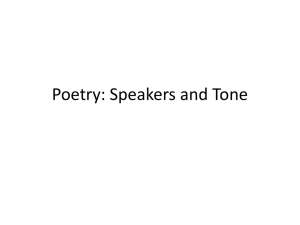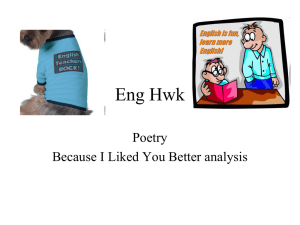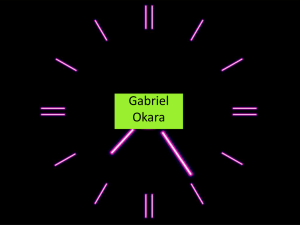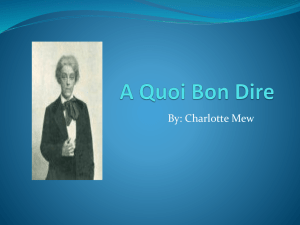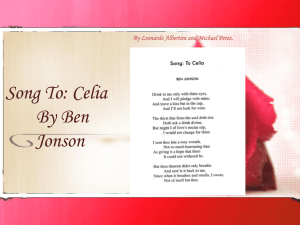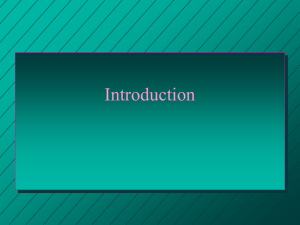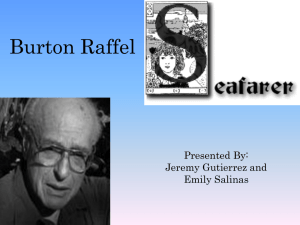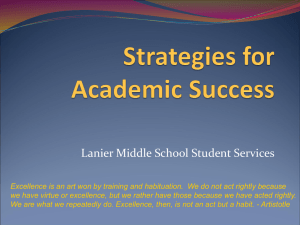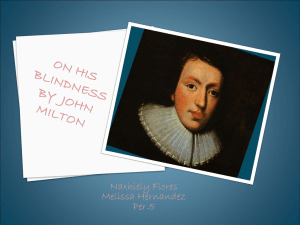The Buried Train
advertisement
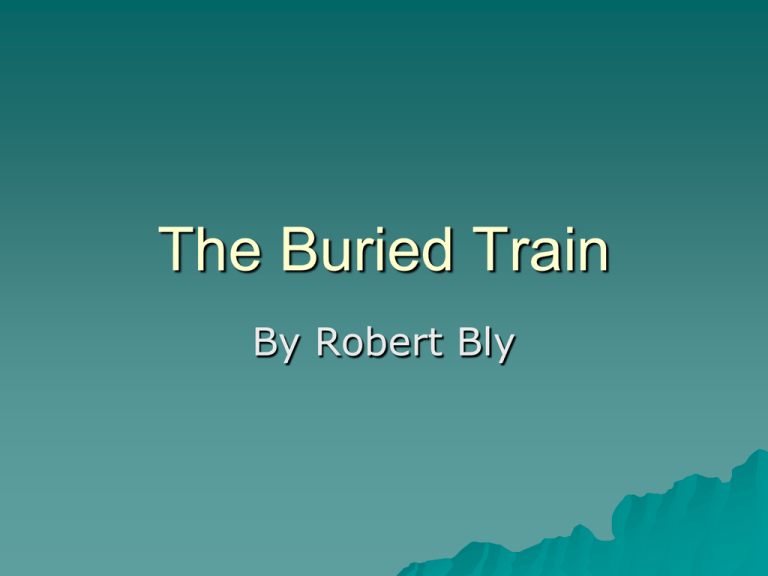
The Buried Train By Robert Bly Robert Bly Robert was born December 23, 1926 in Madison Minnesota He graduated from high school in 1944 and enlisted in the Navy where he served for 2 years. He attended St. Olaf College in Minnesota for a year then transferred to Harvard University where he graduated in 1950 In 1956 he traveled to Norway and translated Norwegian poetry into English. Robert became determined to start a literary magazine for poetry translation in the United States The Fifties ,The Sixties ,and The Seventies were literary magazines he made that Introduced many foreign poets to American readers. Biography continued During this time he lived Minnesota on a farm with his family. His first wife was the award winning short story author Carol Bly with which he had four children. They divorced in 1979 and Robert soon married Ruth Ray in 1980. He has a stepdaughter and a stepson who unfortunately died in a pedestrian-train incident while he attended private college in Minnesota. Suicide was suspected but never confirmed. Bly has been writing poetry throughout his whole life and has won many awards for his poems. The Buried Train by Robert Bly Tell me about the train that people say got buried By the avalanche--was it snow?--It was In Colorado, and no one saw it happen. There was smoke from the engine curling up Lightly through fir tops, and the engine sounds. There were all those people reading--some From Thoreau, some from Henry Ward Beecher. And the engineer smoking and putting his head out. I wonder when that happened. Was it after High School, or was it the year we were two? We entered this narrow place, and we heard the sound Above us--the train couldn't move fast enough. It isn't clear what happened next. Are you and I Still sitting there in the train, waiting for the lights To go on? Or did the real train get really buried; So at night a ghost train comes out and keeps going... The Poems Speaker(s) The poem seems to be a conversation between two people or a person discussing something to himself/herself. Speaker One Constantly asking questions about what happened Speaker One is constantly confused about the facts including location, events, time, and aftermath. Never satisfied with the answers Speaker Two Experienced the same event as speaker one and seems to know the facts. Same age as the speaker. “was it the year we were two?” Elaborately answers the first question, dully answers the second, and gives no answer to the last question. In some instances speaker two could be speaker one answering his own questions. Speakers’ Attitudes Seem to be calm and collected throughout the dialogue. Speaker One is very confused about the situation. Speaker Two doesn’t seem to know all the facts either. For the dramatic situation that happened the speakers are far too somber about the tragedy. In a way the speakers are reasoning with each other. The Poem’s Organization Four stanzas with no rhyme scheme Stanza One- Speaker asks about the incident of the buried train and receives a detailed answer. Stanza Two- The answer continues in detail emphasizing the normality of the situation. Stanza Three- Speaker asks when the accident occurred. The response doesn’t answer the question but further describes the accident. Stanza Four- Long question that goes on out of poem receiving no answer. Shows that the speakers do not fully understand what happened. Imagery The Train – Represents normality in ones life and what we desire. The speaker had something then it was destroyed. The Avalanche – Represents a tragedy or traumatic event that alters one’s life. The train is buried showing the tragedy is covered up. Lights – Represent false hope that the tragedy can be reversed and the train (our desire) will work once again. More Imagery Real Train – Represents the reality of what happened and that the traumatic event cant be reversed as hoped. Ghost Train – Represents the haunting of the tragedy that reoccurs throughout the speakers life. Diction and Syntax Word choice to instill calmness – The setting is in Colorado which is seen as serene and peaceful. – Fir tops- using trees in the poem calms the poem down. – Thoreau used as an author who focused on nature and simplicity. – Passengers are reading which is a calm and quiet activity – Smoke is used coming out of the train and the conductor is smoking. Smoke seems slow and calm. Word choice that instills confusion – – – – – “Was it snow?” speaker asks if the avalanche was snow Smoke is hazy and obscure Engine sounds “I wonder” and “It isn't clear” Constant questions and bad answers Syntax – Continuous questions gives the poem a fluid feel – “So at night a ghost train comes out and keeps going...” – Last sentence doesn’t end and infers that the dialogue keeps going. – Adds to feel of uncertainty and no closure to problem Conclusion At first The Buried Train seems to be a simple poem about a train accident in Colorado but it turns into the description of how a traumatic event has effected somebody's life. The speaker questions what has happened to either himself or another participant in the event. He/She fears the aftermath and wonders whether his life will go back to normal or whether it will be changed forever. He/She is haunted by the tragedy and is left without closure.
